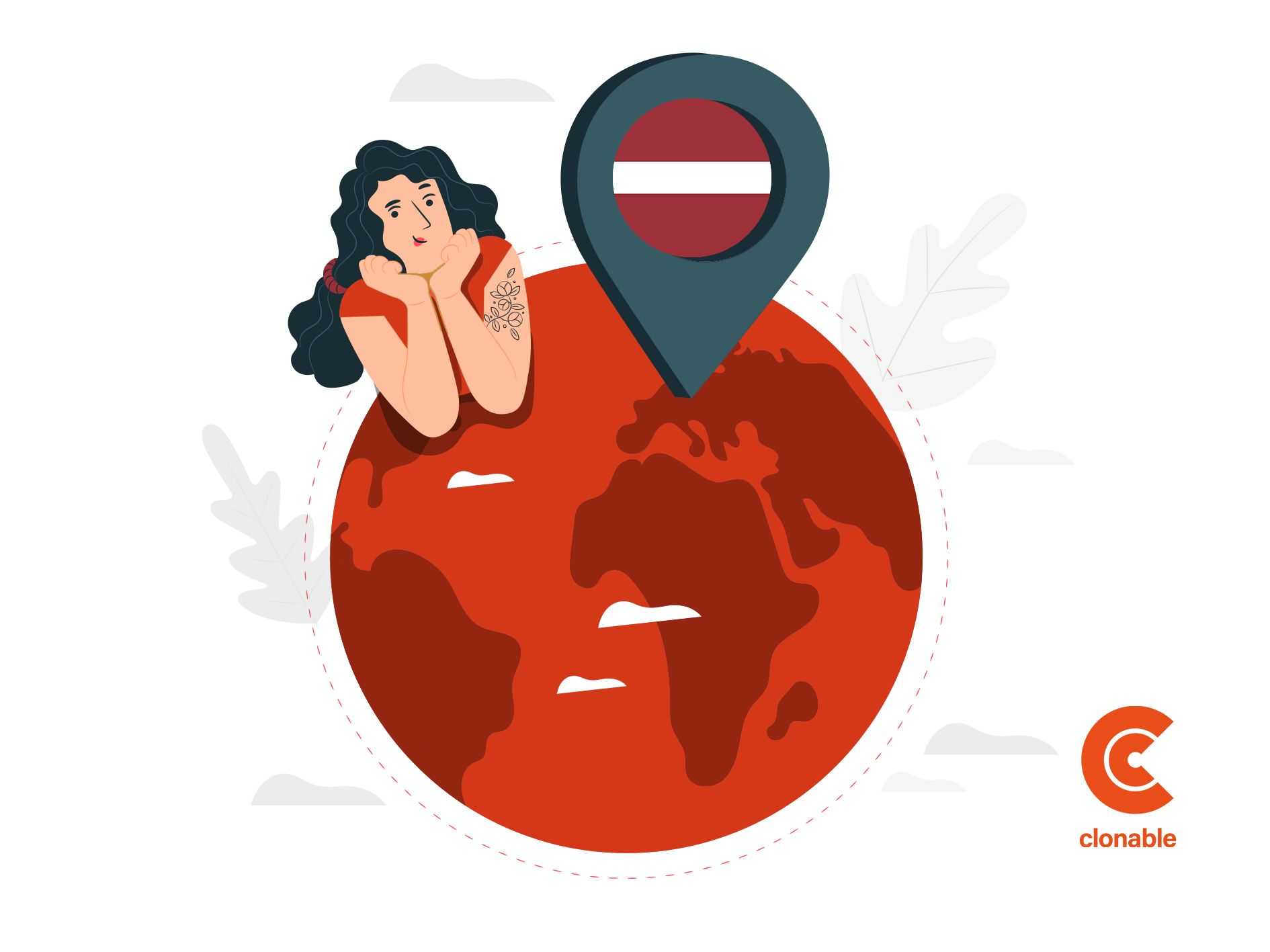The Baltic States: Estonia, Latvia & Lithuania, an untapped market for cross-border e-commerce
In recent years, cross-border e-commerce has become increasingly popular as companies look to expand their reach beyond their home market. The Baltic States offer a unique opportunity for companies looking for cross-border e-commerce. Located between Europe and Asia and with a population of just over 6 million, the Baltic states are often overlooked as a potential market for online businesses. However, the Baltics offer significant opportunities for companies looking to enter new markets. Especially with a tool like Clonable in mind.

There are several reasons why the Baltics are attractive to companies looking to expand into new markets.
1. Little competition, especially online. To drive Estonian, Lithuanian and Latvian traffic to your website, local marketing and SEO are essential. To do this effectively, you need to translate your store into Estonian, Lithuanian and/or Latvian for the Baltic market. With a translated version of your store, you can quite easily get your store indexed in Baltic search engines and generate free organic traffic. Another great and very effective way to generate good quality, qualified traffic is Google Ads.
2. A highly educated and affluent population. This means that businesses can target a high-quality customer base with relative ease.
In short, the Baltic States offer a unique opportunity for companies looking to expand their e-commerce activities into new markets.
E-commerce in Estonia
Estonia is a northern European country with access to the Baltic Sea. It borders Russia, Latvia and Finland through the Bay of Finland. With a population of 1,306,788, Estonia is an emerging consumer market with a growing e-commerce sector. What's worth noting - Estonia is all about the Internet and startups. This country is the most connected country in the world. Therefore, much of its economy is based on the Internet. There is nothing that cannot be handled online in this country. From government disputes to buying bus tickets.
Estonia is an example of a country that has come a long way economically. The same goes for consumer behavior. It is a price-sensitive society, but this sensitivity decreases with age, and with more income they spend more. Like most European markets, Estonia is also aging. Nevertheless, there is a clear interest in e-commerce and social media.
Estonian e-commerce market sales are expected to reach $372 million by the end of this year. The annual growth rate is 4.8%, so the market volume is expected to reach $470 million in five years. This year user penetration may reach 53.2% and by the end of 2025 it is expected to reach 63.4%. The top online payment methods in Estonia are credit cards, bank transfers and PayPal.

E-commerce in Latvia
Latvia had 1.9 million inhabitants in 2019, 84% of whom use the Internet. Latvian e-commerce sales are estimated to reach 900 million euros in 2022 and grow to around 1.3 million euros in 2025. Latvia is a new consumer market for e-commerce. So there is great potential, especially for e-commerce providers who know the character of the Eastern European market and translate their Web sites into Latvian.
For Latvian consumers, price is the most important factor in purchasing decisions. The more affluent part of consumers, who can afford more choice, indicate brand as the decisive factor. They are willing to pay more for their favorite brand's products. Recreation, hotels and restaurants are among the expenditures that have increased significantly in recent years. Interest in e-commerce has also increased, and the rate of this growth is one of the highest in this part of Europe.
The most popular payment method in Latvia is by credit card. In second place here are cell phones and in third place is the 14% market share.
E-commerce in Lithuania
About 3 million people live in Lithuania. In 2021, GDP was $57 billion. Lithuania expects e-commerce to reach about 1.5 billion euros in 2022. In 2025 years, the amount could reach 2.5 million euros thanks to an annual growth rate as high as 18.59%.
Lithuanians have different preferences depending on income or age group. Therefore, the market is highly fragmented. Wealthier customers often choose the brand as the most important purchasing factor, while for Lithuanians price determines quality. Importantly, for these consumers, products from abroad are also synonymous with high quality. The Lithuanian economy is constantly growing, increasing consumer confidence. More and more customers pay attention to service and loyalty programs.
Lithuanians believe in technology. Therefore, mobile payments account for more than half of transactions. The second favorite is paying with credit cards - 37% of transactions are completed this way. Third place is taken by e-wallets - 10% of payments are made with them.
Lithuania is still a growing e-commerce market. So there is a lot of room for new retailers. If you are targeting this country to expand your business, feel free to do so. Opportunities abound, just like in the rest of the Baltic states.





